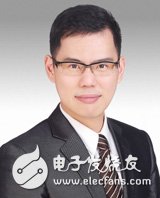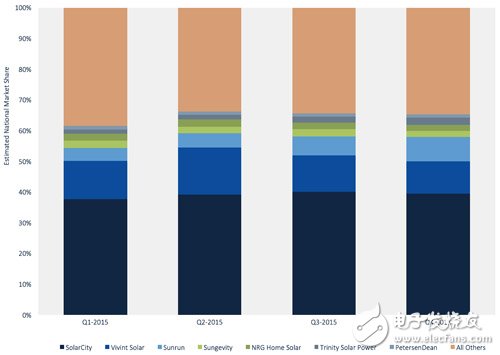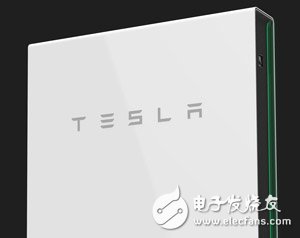Tesla's big action challenges the four major strategies of the energy industry
Electric vehicle manufacturer Tesla released the second phase plan (Master Plan, Part Deux) in July 2016. According to the plan, Tesla's ideal business model is to establish an "energy production-consumption ecosystem" formed by clean energy generation, distributed storage equipment and electric vehicles, and develop a new business model of "vertical integrated energy company".

MIC Senior Industry Analysis Zheng Zhaolun
Electric vehicle manufacturer Tesla released the second phase plan (Master Plan, Part Deux) in July 2016. In addition to a number of new concepts for vehicle design and use, the plan also mentions the integration of energy production and storage. It breaks through the traditional style of car manufacturers that focus on producing vehicles and not involving energy network deployment.
Tesla has been laying out batteries and energy storage systems for several years. Analyze Tesla's second-stage outline plan to understand Tesla's ideal business model, and establish a new "energy production-consumption ecosystem" formed by clean energy generation, distributed storage equipment and electric vehicles. Sales of power generation, storage and electricity solutions, etc., form a new business model of "Vertically Integrated Energy Company".
In light of other industry trends, it is expected that two products, such as "home storage equipment plus electric vehicles" or "home solar power generation equipment plus storage equipment", will gradually emerge. However, the business model of tandem power generation, storage and electric vehicle integration is not easy to see the same competitors in the short term except Tesla. Tesla's second phase of the program outlines a clear picture of the company's complete strategy - becoming an energy company.
Challenge the four major strategies of the traditional energy industry chainIn Tesla's second phase of the program, the company's co-founder Elon Musk described four major development strategies, namely integrating power generation and energy storage, expanding product lines to cover major ground transportation needs, developing self-driving technology and developing vehicle sharing services. .
Among the four major development strategies, at first glance, only the first strategy is directly related to the transformation into an energy industry. However, looking at the second, third and fourth strategies, on the surface, although it is a strategy for manufacturing and providing vehicle sharing services, the basic purpose is still to convert the demand for fossil energy in the transportation market into electricity by promoting electric vehicles. The demand further expands the market for demand for electricity from Tesla (Figure 1).

Figure 1 The Tesla Model 3, which is dominated by the mass market, is the main vehicle for Tesla to further promote electric vehicles. Data source: Tesla
However, whether it is the automotive gasoline supply industry or the electric power industry, there is a very high barrier to entry. Behind the automobile gasoline supply industry is a huge oil industry structure that is difficult to shake. On the other hand, the traditional power industry needs not only to build large power plants, but also to build huge power grids. Tesla, which uses the Silicon Valley technology venture capital to obtain growth funds from the market and needs to produce innovative results at any time, is actually difficult to follow the above-mentioned model and enter the energy industry in a traditional competitive way.
Therefore, Tesla proposed a business model for vertically integrated energy companies. In short, the strategy is divided into three steps: “Amplifying electricity demand with electric vehiclesâ€, “laying distributed energy system manufacturing energy†and “integrating electric vehicles and distributed energy systems into a single brandâ€:
Amplifying power demand with electric vehiclesAs an energy business, Tesla must continue to expand the market's demand for energy. The rise of electric vehicles will drive households to continue to increase their electricity consumption. It also means that consumers' energy expenditures will be transferred from the payers to the petrol operators. Under this trend, Tesla chose electricity rather than oil as the core of its energy business, and initially produced electric vehicles, in the hope of directly docking Tesla's own electricity in the future.
Layout distributed energy system manufacturing energyHow to share the energy market with power companies that already have large power generation facilities and complete power grids, Tesla chose to join the "distributed energy system" competition, which provides consumers with the option of "self-property power generation, self-storage power storage". As a result, Tesla does not need to build large-scale power generation facilities and complete power grids that require long-term cost recovery, and can directly cut into households. To provide a "home-to-house, self-storage" solution, Tesla needs to have two solutions: solar power equipment and power storage equipment.
In the solar power generation sector, on June 21, 2016, Tesla announced that it would acquire the full share of the US energy industry Solarcity at a purchase price of between US$26.5 and US$28.5 per share. Solarcity is a US-based solar energy industry whose main business comes from providing solar-powered solutions to residential customers (Figure 2). According to Greentech Media, Solarcity's market share of residential solar solutions in the US is about 30% in 2015 ( image 3). Through this acquisition, Tesla has acquired the ability to provide "home-to-home power generation" solutions.

Figure 2 Solarcity leads the US residential solar market in a leasing model. Data source: Slolarcity 
Figure 3 Source of data on market share of US residential solar installers in 2015: GTM Research
In terms of power storage equipment, Tesla has been developing batteries and energy storage systems for a certain period of time. In April 2016, shortly before the incident, Tesla officially announced the "TESLA ENERGY" energy storage equipment solution, providing "Power Wall" (Figure 4) for household electrical storage equipment and "Power Pack" for enterprise storage equipment. In terms of capacity, Tesla's upcoming battery plant "Giga Factory" is expected to produce a total of 105 GWh of batteries per year, and can rely on economies of scale and automation to reduce the cost per kWh of batteries by 30% to ensure their price advantage.

Figure 4 Tesla enters the energy storage market with Power Wall. Data source: Tesla
The production scale of Giga Factory is very amazing. The annual capacity of Panasonic's car battery in 2015 is about 4.5Gwh, and the annual global capacity of lithium battery is about 100GWh. In other words, the capacity of a single Giga Factory is already comparable to the capacity of the global lithium battery in 2015.
Tesla, which can provide both household power generation and storage solutions, solves the need to separately rent (or purchase) and install power generation facilities and storage equipment. As long as it is effectively integrated with electric vehicles, Tesla can truly become a clean energy source. , storage equipment and one-stop solution for electric vehicles.
Inductors serve as indispensable components in electronic circuits, effectively managing current flow and filtering out unwanted frequencies. For low-frequency applications, selecting the appropriate Inductor is crucial for optimal circuit performance. Our extensive range of inductors, meticulously designed for low-frequency filtering tasks.
Low-Frequency Filter Inductors: This targeted filtering capability ensures pristine signal integrity in your circuits, minimizing unwanted distortions and ensuring accurate data transmission.These inductors feature exceptional inductance values, specifically tailored to effectively attenuate high-frequency noise while allowing low-frequency signals to pass unhindered.
Filter Inductors with Base: Designed for seamless integration into your project layout, these inductors come equipped with a sturdy base. This base provides a stable mounting platform, simplifying the assembly process and enhancing the overall mechanical stability of your circuit. Whether you're working on a compact PCB design or a larger breadboard prototype, these inductors offer a practical and reliable mounting solution.
Round and Square Potting Inductors: Available in both round and square form factors, these potting inductors provide exceptional protection against environmental factors. enhanced protection makes them ideal for applications where environmental conditions might pose a threat to the inductor's performance or longevity.The potting material encases the inductor core and windings, safeguarding them from moisture, dust, and other contaminants.
Adjustable Inductors: For applications requiring fine-tuned control over inductance values, adjustable inductors offer a unique advantage. These inductors come equipped with a mechanism that allows you to precisely adjust the inductance within a specific range. This adjustability empowers you to optimize circuit performance based on your specific requirements, ensuring your design achieves its full potential.
Encompassing these diverse inductor types, our collection caters to a wide spectrum of low-frequency filtering needs. With their superior performance and versatility, these inductors become instrumental in crafting high-fidelity, low-noise electronic circuits.This range empowers you to select the most suitable inductor for your project, taking into account factors like filtering requirements, mounting preferences, and environmental considerations.
Low Frequency Filter Inductor,Filter Inductor With Base,Round Square Potting Inductor,Inductor Adjustable Inductor
Huizhou Show-Grand Electronics Co., Ltd. , https://www.sgtransformer.com